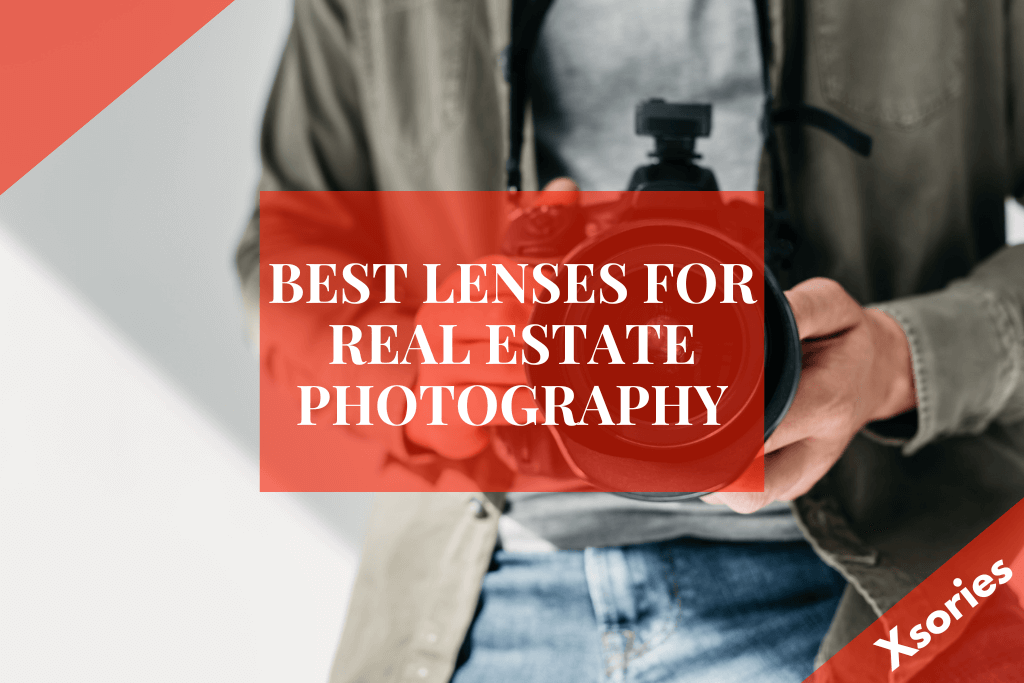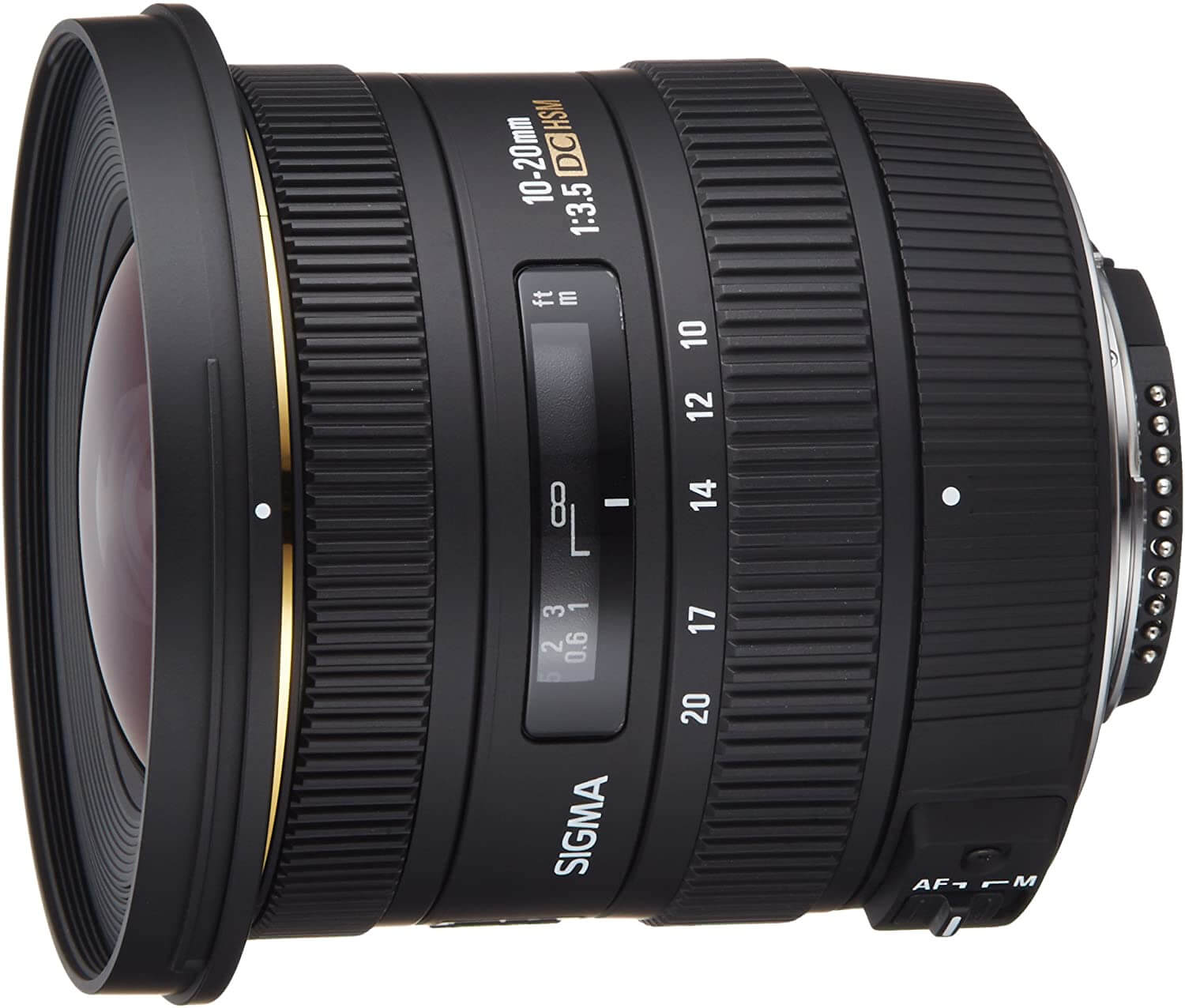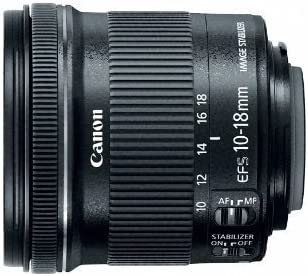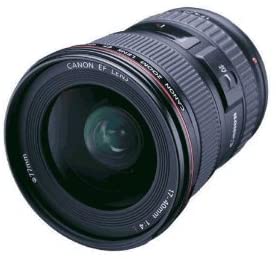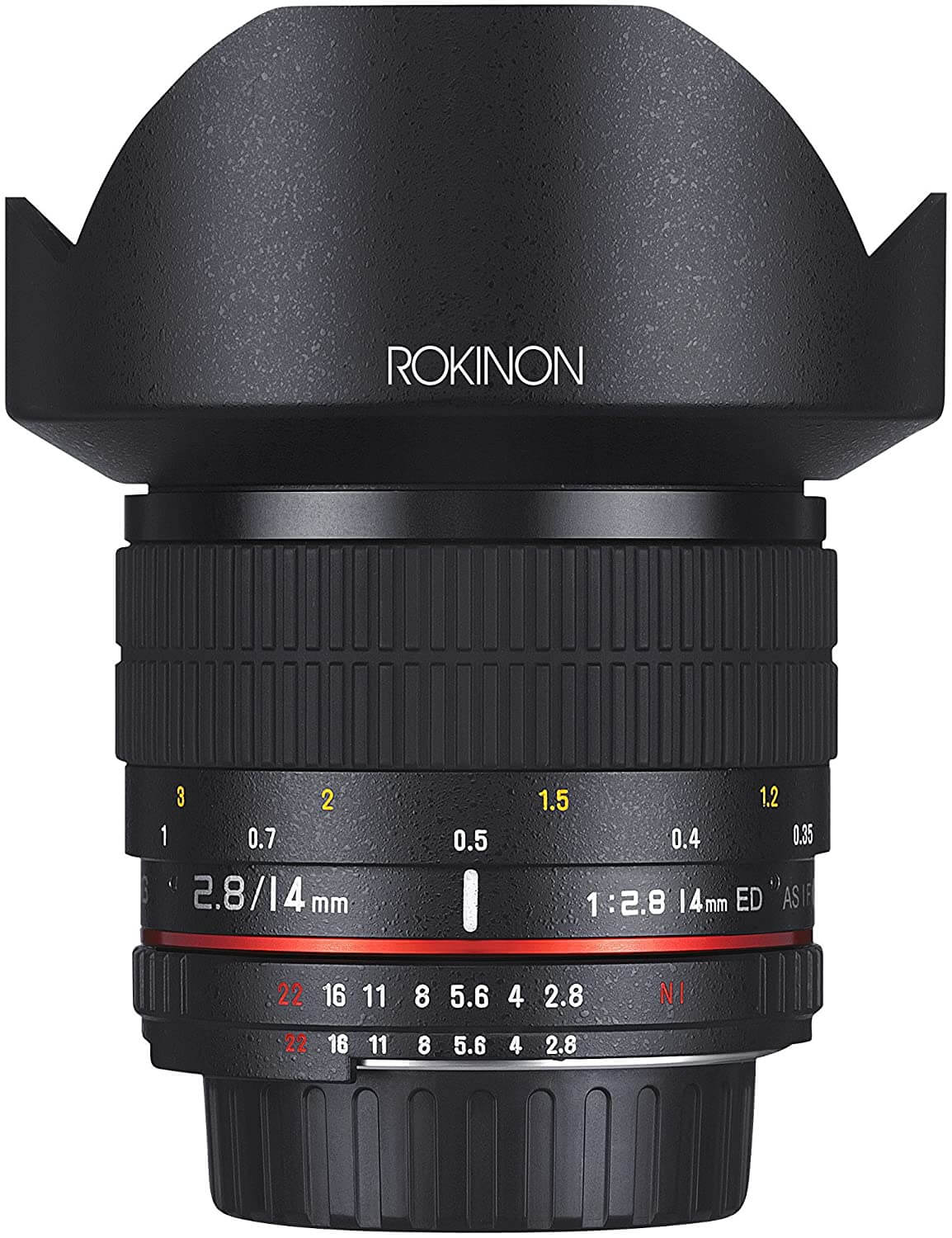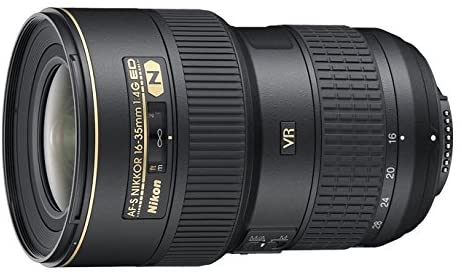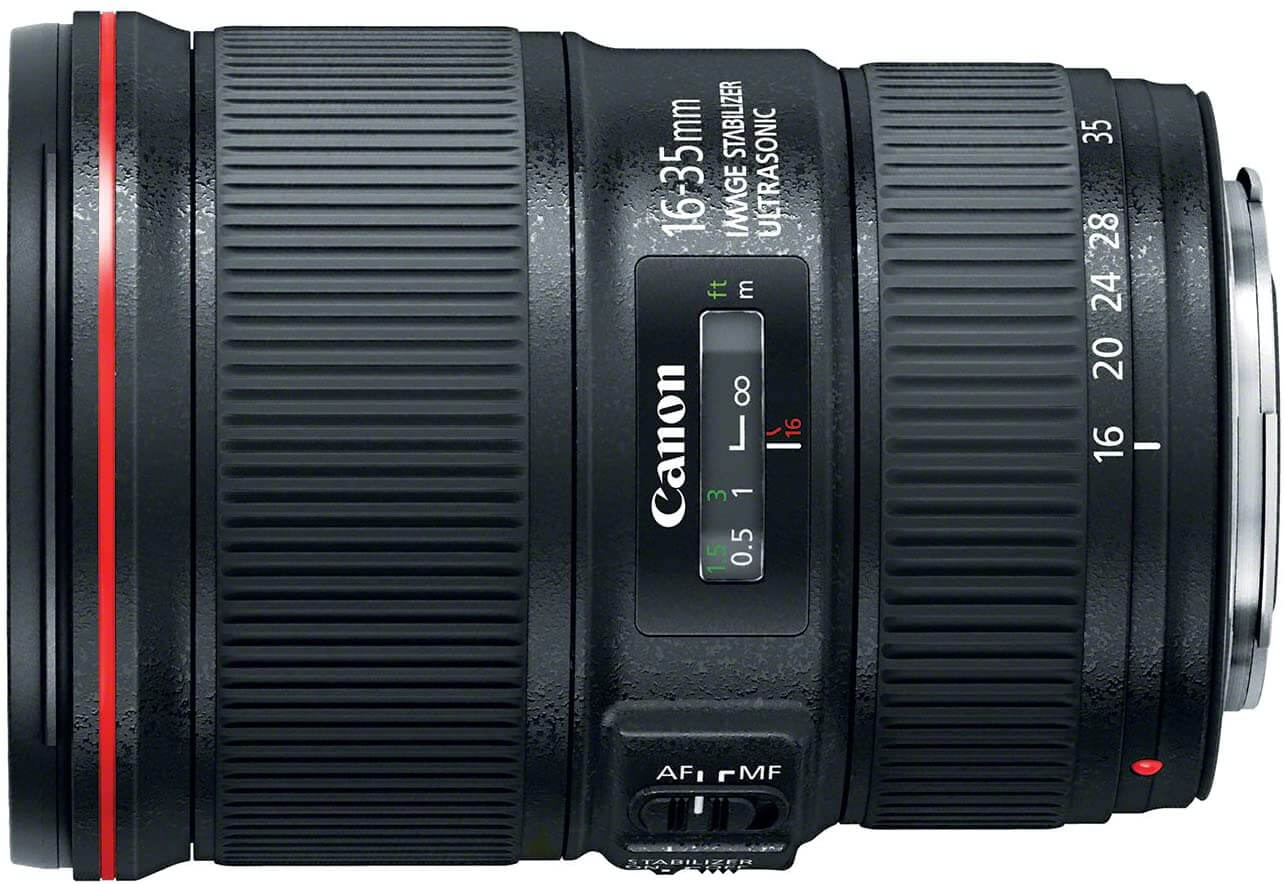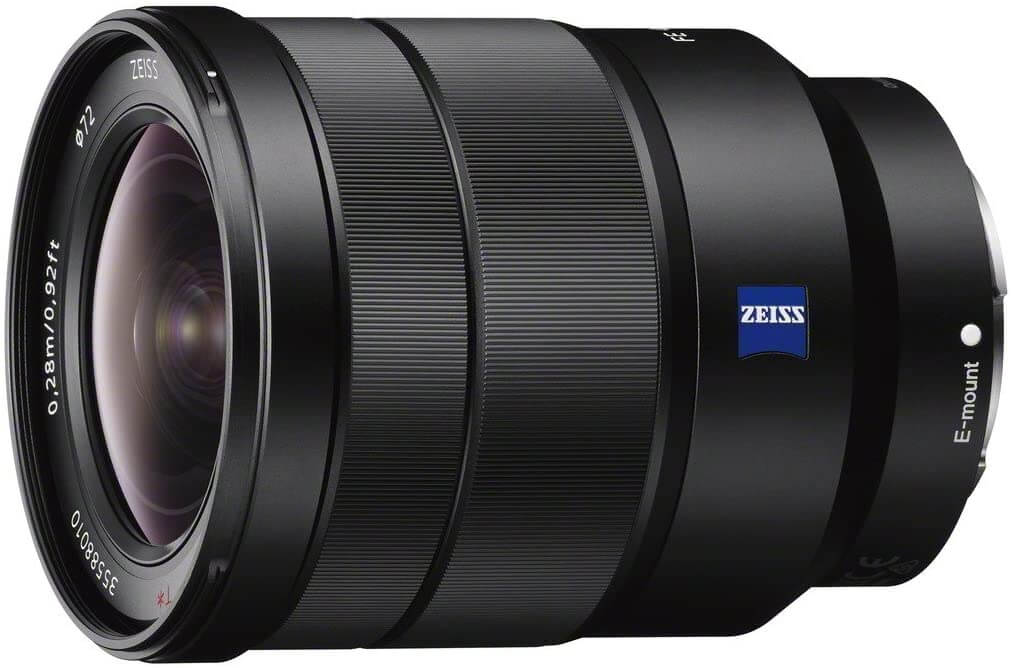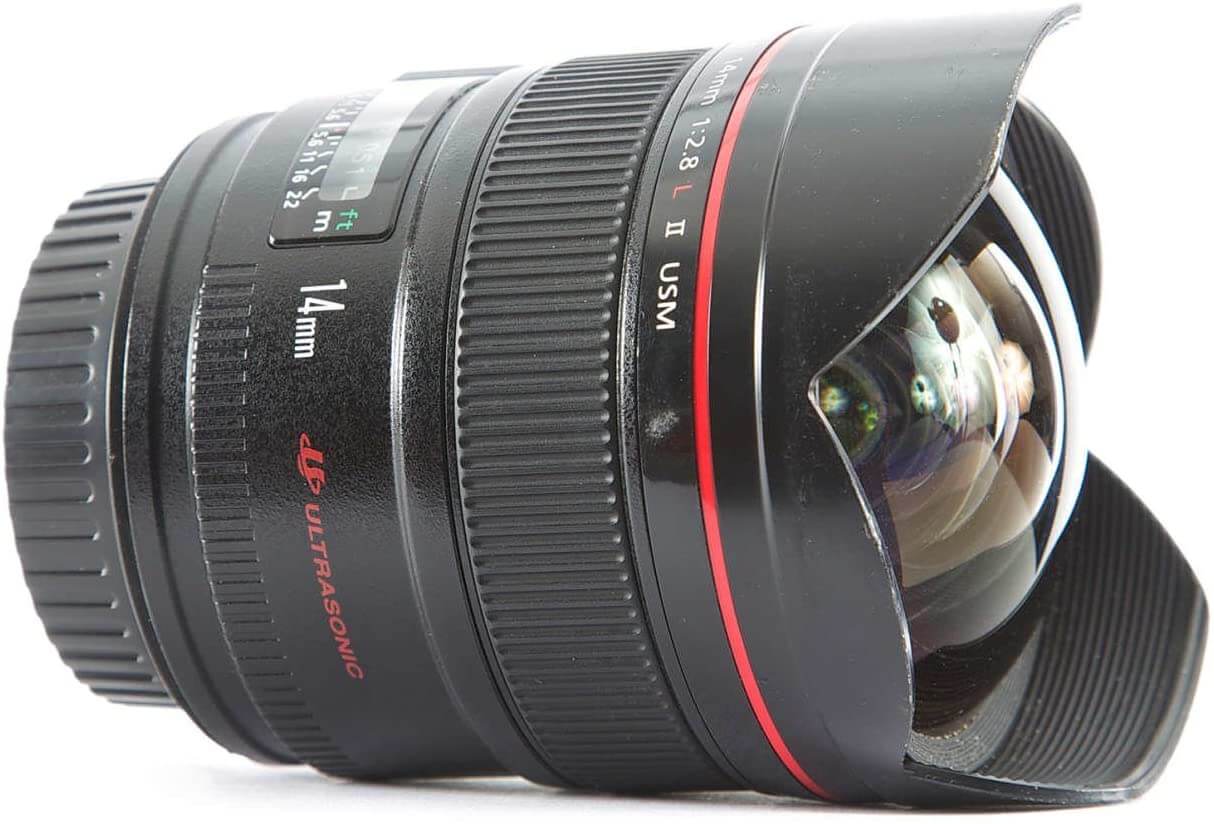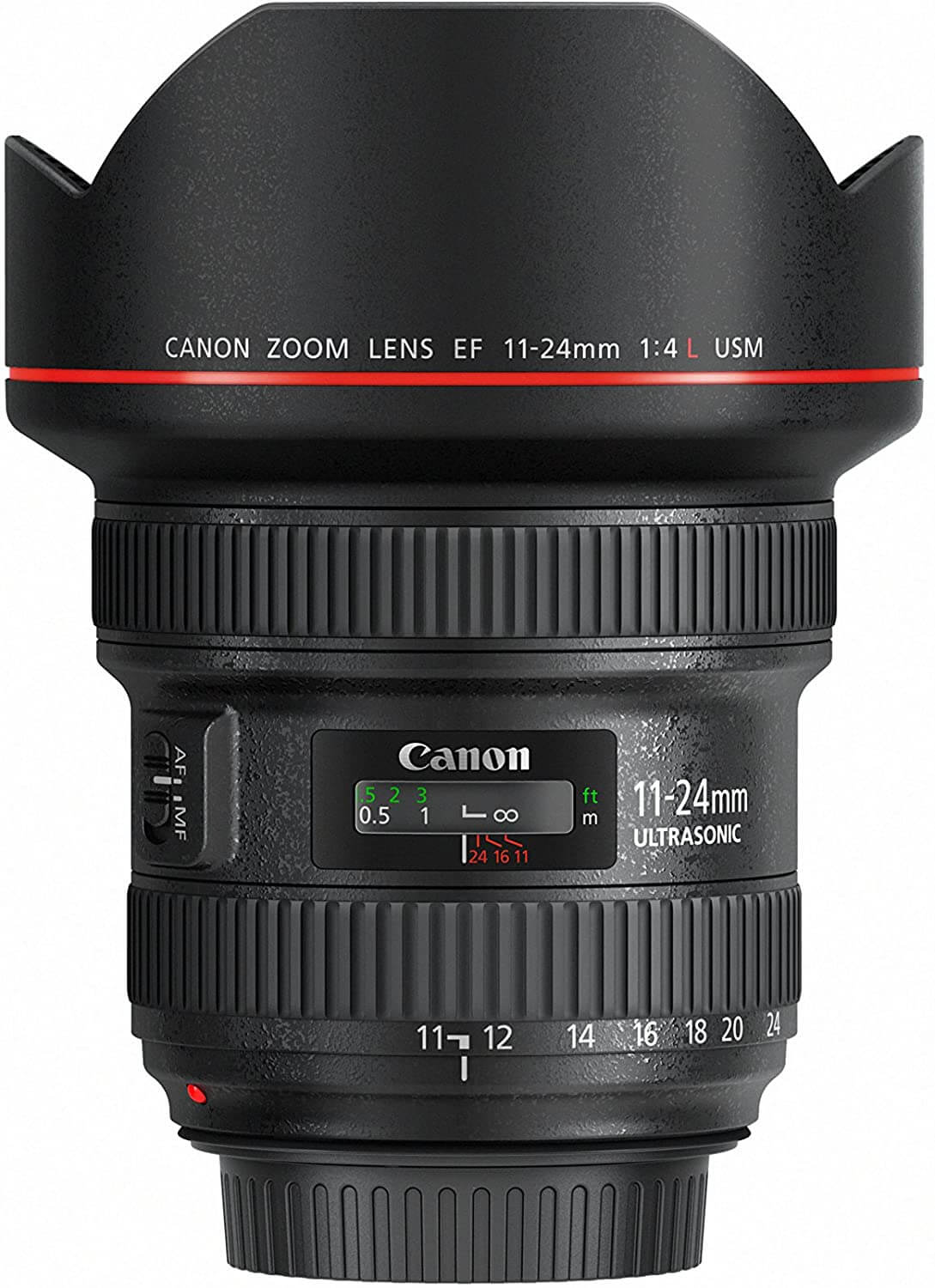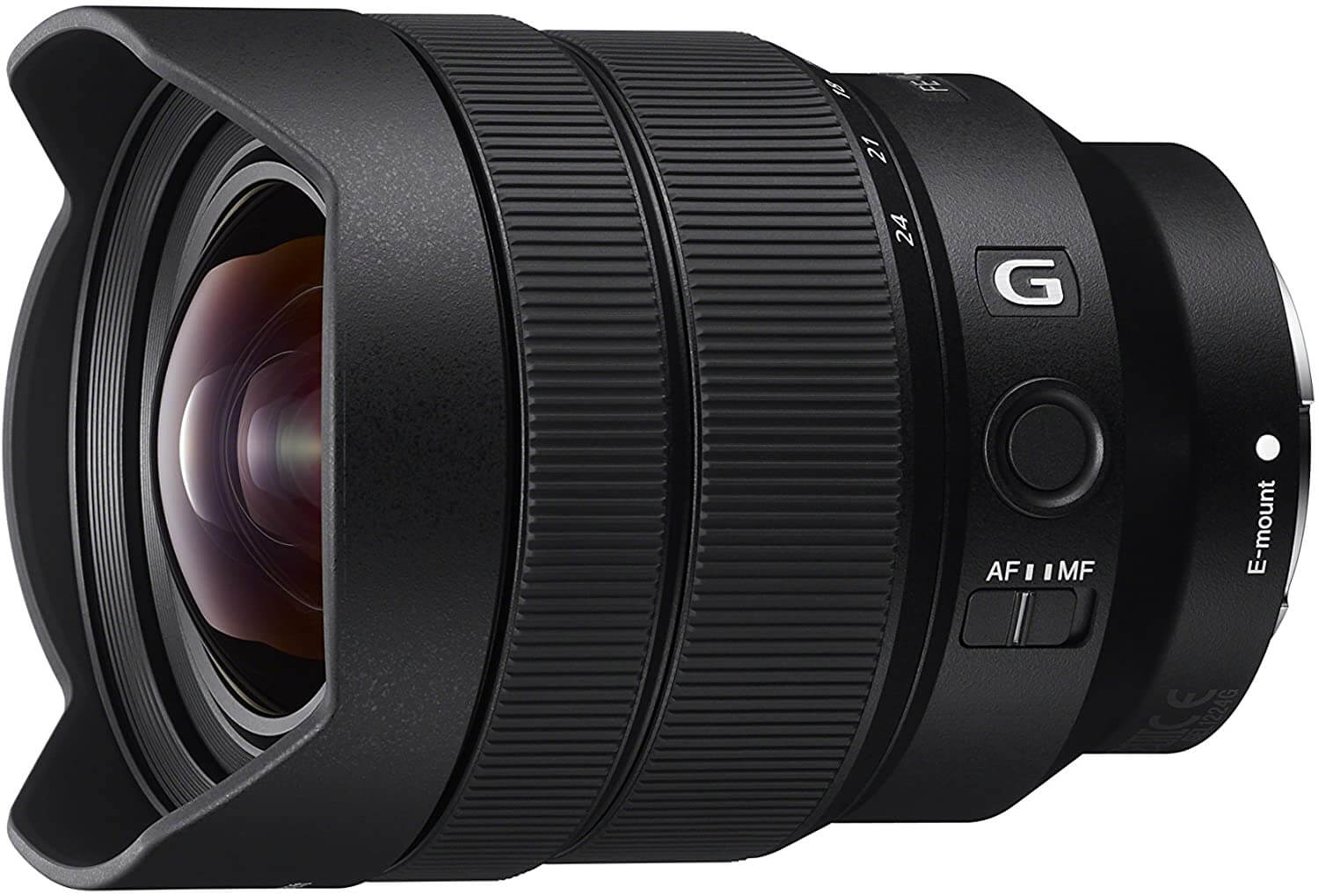When you’re a customer in the real estate market, it can be very easy to get bogged down by all of the options in front of you. We’ve all been there when you’re going through property after property and trying to visualize how good it would look after you get it.
As a photographer, it’s your job to capture the perfect images of property for these exact situations, when people can use your beautiful photos as a template for their ideal property. Real estate is an industry that focuses on aesthetic above all else, and when you’re looking for the best lens for real-estate photography there are so many products to consider. Today we are going to help to provide you the best options for lenses that will give you everything that you might need to bring out the best in the property you are photographing.
We understand that photography is a line of work in which technical precision and quality of your work is absolutely everything, and we want to help you find a lens that is ideal for your line of work. If you choose the right camera lens, you’ll potentially make your task so much easier, to ensure that your customers receive the highest quality images.Best Pick
The Sigma 10-20mm offers a great deal of quality and assurance as a lens if you are willing to pay for it. It is a durable, high-resolution lens that offers precision, versatility, and one of the most robust frames of any option on the market. It has the clearest mark of quality in the market at the time of writing.
Budget Pick
If you don’t want to break the bank for your lens, the Canon EFS 10-18mm lens is a reliable and powerful lens for the amount you pay. Its image stabilizer and effective range alone makes it a viable option for its price point, and the variety of additional features it grants you make it a worthy purchase.
Quick Comparison: Top 10 Best Lenses for Real Estate Photography
1. Sigma 10-20mm f/3.5 EX DC HSM ELD SLD Aspherical Super Wide Angle Lens
The Sigma 10-20mm lens is a product that you can buy with the confidence that you will receive an ideal lens for a variety of situations. Reading that title, it can be very easy to be intimidated by the groups of acronyms that follow its name, but understanding what it can offer will give you a far greater idea of the utility this lens may offer you.
It features an exceedingly strong and robust build that will ensure durability and quality, and it offers an impressive lifespan without worrying about wear. Its unique Hyper-Sonic Motor (HSM) provides a quick focus while operating close to silently, and its Ultra-Wide-Angle Lens provides a large range of movement and freedom to adjust by using the zoom ring, making it ideal for real estate images.
It’s worth pointing out that the Sigma 10-20mm doesn’t come equipped with a standard image stabilizer, and it can be subject to small amounts of flaring around the corners of the images in specific situations. Still, this lens is very effective for wide-angle shots and snapshots of small spaces alike, which is ideal for the field of real-estate. It’s a very advanced piece of technology that you will find a great deal of joy with if you have access to its many features.2. Canon EFS 10-18mm f/4.5-5.6 IS STM Lens
The Canon EFS 10-18mm is a lens that provides a great deal of quality for a fraction of the price of other lenses. Its plastic frame may put off some people who religiously follow metal lenses, but the lens itself appears sturdy and solid enough for this to be a non-issue.
It comes built-in with an Optical Image Stabiliser and a seven-blade aperture, which allows for greater finesse and limited background blur while you record film or capture stills. It has a Full-time manual focus that lets you adjust on the fly and rely on it in a variety of situations, and all of its focal lengths offer consistently sharp results edge to edge, which makes for higher quality photos that don’t risk dullness on any particular side of the image. You might find that it’s quite simple to operate also, as it comes packed into a small size and is easy to set up, while still maintaining durability.
For all of these benefits, it’s worth you knowing that there are a few negatives. Its aperture range means that it doesn’t perform as well in low light settings, especially when using ranges of 14mm or above you might find that the aperture drops significantly, and you occasionally may run into some minor lens distortion and flare, especially when photographing brighter light sources. But in the face of these slight issues, we feel that the Canon EFS 10-18mm lens is a quality pick if you’re on a budget.3. Canon EF 17-40mm f/4L USM Ultra-Wide Angle Zoom Lens
The Canon EF 14-40mm is a lens that prides itself on how user friendly it can be while retaining its usefulness in many different settings. It’s very focussed on precision, in particular, its use of a Ring USM may be handy to you, as its ability to focus quickly and quietly in the field can only be of benefit to you.
It also uses a seven-blade aperture to increase the quality of anything out of focus very well. Its build quality is impressive and durable, with focus and zoom rings that are ideally sized and easy to precisely operate. It’s not the most ideal lens for lower light shooting, and indoor photoshoots are not always going to turn out properly unless you’re using a flash camera or a tripod.
However, for such a heavy-duty lens it is surprisingly very portable and easy to set up. Ultimately if you pick this lens up, you can be assured of having an ideal lens for versatility and multi-purpose photography.
4. Rokinon 14mm f/2.8 IF ED UMC Ultra-Wide-Angle Fixed Lens
With a 115.7° view with a full-frame camera, and an Ultra-wide rectilinear view that make it very effective for the specific demands of landscapes and real-estate photography, the Rokinon 14mm is a solid option for a customer looking for a specialized lens. It offers a unique 14-element 10-group design, which helps to minimize CA and distortion, and has a special Ultra Multi-Coating to reduce ghost images and annoying flares.
The lens itself is not zoomable however, set as a fixed 14mm focal length. Combined with its lack of an image stabilizer, this means that the Rokinon 14mm lens is always going to be a lens for a very restrictive line of work, and you may struggle to capture the ideal angles for all aspects of a property if you use this lens alone.
However, as part of a toolkit of lenses, or if your line of work aligns with its angle of view, this lens might be a solid choice. It offers a lot of potential value if you find that your needs line up with what it offers, and you may be rewarded if you’re willing to put the time in to master taking images at that consistent focal length.5. Nikon AF-S FX NIKKOR 16-35mm f/4G ED Vibration Reduction Zoom Lens
Even though it isn’t the ultra-wide-angle lens that the industry typically requires, the focal length of the Nikon AF-S FX NIKKOR makes up for it with an impressively broad range. It’s fixed aperture range of F/4 and the sharp focus that it provides make it an effective choice in low light, and it offers an impressive field of view that shouldn’t feel limited at all when you use it.
Its whole zoom range focuses very quickly at quite a high definition, and it has an internal focus that provides quick and quiet focus with its Silent Wave Motor. Its Nikon VR II image stabilization and vibration reduction only provide more utility with the use of this lens, providing more reasons for you to feel assured of your decision to pick a Nikon AF-S FX NIKKOR up as your main lens.
6. Canon EF 16-35mm f/4L IS USM Lens
The Canon EF 16-35mm lens is a solid option for low light or higher aperture requirements, especially when compared to its previously mentioned 17-40mm cousin. It offers impressive image quality with a filter size of 82mm and is easy to use and sturdy in its own right, being light enough to maneuver but still boasting a durable frame.
In particular, it is notable for showcasing background blur and round out of focus highlights in an aesthetically pleasing manner. It is equipped with a rear-focusing Ring USM which offers impressive speed and precision, while not creating too much excessive noise. It operates quietly and with quick reaction time, allowing you to capture your target more easily.
It’s a very good lens for the requirements of real-estate photography, as it is capable of capturing larger objects that need wide-angle lenses, while still retaining a degree of precision for close-ups. Its focal length16-35mm is not entirely versatile for these closer shots compared to the swiss army knife style of other models, but it still has a lot to offer, especially for a photographer that’s willing to adapt their style to this lens.
7. Sony 16-35mm Vario-Tessar T FE F4 ZA OSS E-Mount Lens
The Sony 16-35mm is a terrific choice for real-estate and landscapes thanks to its impressive zoom range and high standard of quality across most ranges. It comes with a ZEISS T coating to significantly minimize ghosting and flare, and built-in Optical Steady Shot image stabilization to make your job easier in the majority of filming conditions.
As far as lenses go, we feel that this one is a very easy lens to learn how to use, with a high ceiling on what you can accomplish with it. Its ability to maintain a constant aperture quality throughout different settings is especially helpful because it takes away the headache of adjusting exposure settings while working, keeping the lens at F/4 through the whole zoom range.
You also don’t need to worry about losing too much of the functionality that other ultra-wide lenses would provide, as this one’s full-frame shots still cover the same angles similarly, and as a bonus have a similar level of distortion too. Some users reported the lens to be slightly slow to respond to inputs, but the level of use that you can get out of this lens should make up for this fact. Ultimately this lens provides a great deal of value and utility, and you might find yourself able to rely on what it can provide you.8. Canon EF 14mm f/2.8L II USM Ultra-Wide-Angle Fixed Lens
The Canon EF 14mm is an interesting lens to consider, as it doesn’t have an image stabilizer and it will require practice to get used to its specific needs as a device. It has a set focal length of 14mm, which may cause you frustration if you’re looking for a lens that can provide multiple options.
If you often find yourself filming at this focal length and are already comfortable with it, there is plenty to consider here that could be very valuable. It has a Rear Focusing System that is operated through its Ultra-Sonic Motor allows it to autofocus quietly and with speed. Its round aperture and six-bladed aperture system give you a decent amount of control over background blur, and a decent amount of clarity when out of focus, especially in low light.There is a slight amount of flare that you might find to be present in high-light settings but is otherwise quite easily controlled. Its rectilinear wide-angle shots are also clear and incredibly high quality, which might be the deciding factor for a real estate photographer. It has a sturdy frame and a long lifespan, being notably resistant to water and dust damage, and could be a decent option for you if you’re comfortable with the focal length limitations.
9. Canon EF 11-24mm f/4L USM Lens
The Canon EF 11-24mm lens is considered to be heavier than most other lenses of its kind but backs up that weight with versatility and effectiveness. We feel it is ideal for interior shots with straight lines in them in particular, as it can offer you a large effective range of angles while minimizing geometric distortion.
It comes standard with Subwavelength and Air Sphere coatings, which are effective tools that reduce ghosting and flare, and it allows you to adjust the focus of the lens easily while in use with its Full-Time Manual Focus. Its Super UD and UD lenses help correct chromatic aberration and it has a 9-blade circular aperture diagram for greater control over blurred backgrounds.
Its Front-facing element can gather water droplets and dust quickly if not taken care of. This is something you will need to consider; however, the front and rear elements are coated with fluorine to protect from fingerprints or grime. It has the feel of a heavy-duty, specialist’s tool, and for many of you looking for a lens that feels professional standard, this one could be a strong contender.10. Sony - FE 12-24mm F4 G Wide-angle Zoom Lens
The Sony FE offers corner to corner G Lens resolution at every aperture, providing high quality and consistent results in most situations. Equipped with an effective autofocus system which is fast and quiet, you can be assured of its ability towards filming and stills equally.
If you’re looking to use circular filters, then this lens isn’t for you, as it is not compatible with that kind of filter, however its capability to zoom can replace the need for filters when filming on the fly in certain situations.
This lens can be known to produce significant distortion in certain situations, but if you’re talented in post-production this kind of distortion is easily dealt with. This fact makes it not the most suitable for interior or close-range shooting, but still very effective for wide-angle or landscape photography.
Things to Consider Before Buying the Best Lenses for Real Estate Photography
Now that you’ve seen all of the options for the best lens for real estate photography, you may have more questions than answers.
We’ve given you a lot of information here, what details are the most important? Which one is the best for your style of photography?
Here we’ve given you a few things that may help to consider before you buy any of these lenses for yourself.
Why do I need such an expensive lens if I’ve already bought a high-quality camera?
The fact is that the camera that you use can only do so much on its own. Considering that you’ll be working in the real estate industry, where you’ll be competing with photographers that have made a career producing professional standard images, it’s not too late to upgrade your equipment to stay in the race.
Saying that you have a camera and therefore you don’t need a lens is similar to wanting to enter a racing competition driving a sedan. Yes, the sedan works in your everyday life, and it’s reliable enough to the point that you know what you can get out of it. But coming up against professional photographers and with all of your clients to please, having the best equipment yourself is almost a necessity!
Here are a few more reasons why a lens is an ideal investment for real-estate photography:
Reduces Error
It’s no secret that there are so many different kinds of errors that can occur in photography. It seems like the more an industry requires quality images, the more errors and distortion types that you have to worry about reducing. Especially in real-estate and architecture, the number of straight lines and the different amounts of lighting you will need to capture in each shoot threatens distortion that could ruin your image.
A great deal of this distortion can be removed in post, it’s true. But if you expect to spend hours upon hours after each shoot editing and reducing your images more than you need to, you may find that it’s a waste of valuable time, when a lens that suits you may remove the majority of issues you’ll have without one.
Elevates Your Camera’s Performance
No matter how expensive your camera is, having a lens attached greatly reduces the workload that your camera would need to do to give you the perfect shot. Having a lens to work on the behind the scenes things, like focus and lighting settings, frees you up from having to manually control your camera between each situation, letting you focus on your job rather than fiddling in the field.
Giving you high quality and precise photos and a variety of settings that you can set up and see immediate returns on is a bonus of having a lens. You can almost immediately see the benefits of your investment when you take that first picture in the ideal conditions and see how spectacular it turns out.
Makes you feel at one with your target
When you’re really in the zone, being a photographer feels incredible. You’re given beautiful subjects that you’re allowed to capture with a camera, in a process that often makes you feel like such a professional.
Not only does having a quality lens build on this side of things, but the ability of a lens to optimize your photos and video will also help you produce the results that will make you feel like a professional, as you know that you’re using a tool that the professionals swear by.
Increases the amount of work you can do
The best lenses are a combination of powerful and versatile technology. Yes, it’s important to ensure that your shot is focussed properly and that you have a clear and high definition image. But a lens offers you so much more freedom in your photography.
It can give you added freedom to zoom and adjust your angles while maintaining a high level of quality, and it can allow you to use the same camera to potentially capture wide-angle shots of exteriors and also incredibly detailed close-ups. With a bit of effort into learning the ideal way to use one of these lenses, you could find so much more use out of your camera than you ever could have without one.
Why now is the perfect time to buy a lens
We know that there are so many options to choose from, and you want to be sure that you’re getting the very best quality lens for an acceptable price. The fact is that many quality products in today’s market offer a great deal of quality, features, and even more advancements in design that occur every day.
Now is the perfect time to look at all of these options and take advantage of these opportunities. Being able to customize exactly the kind of lens you use to create the highest quality images is such a strong factor that elevates your work above your competitors. It’s ultimately up to you to build your signature style as a real-estate photographer, and the right lens will help you portray that style in so many ways.
Focal Length Range
The focal length range is essentially how much of an angle of view a particular lens has. It’s one of the most important aspects of a lens to consider as it is responsible for how much of an image before you that gets accurately captured, as well as the size of objects within the frame. Ideally a focal length range of between 15mm to 25mm to be ideal in many situations, but it’s really down to personal preference which length suits you.
Aperture
All camera lenses have an “aperture range”, which refers to the size of an opening in the lens itself that dictates how much light can get into the camera. The wider this aperture range is, the better your lens will perform in settings with lower light, which could be something important to consider depending on your needs.
If you’re looking for that beautiful picture right on dusk or sunset, right as the sun is only barely visible to create a stunning photo, a wider aperture range will be needed. Aperture ranges are measured by numbers with an F behind them, such as F/1.4, F/2, and F/2.8, and understanding the difference between these terms is crucial when considering a specific lens.
Image Stabiliser
Any camera lens of decent quality should come equipped with an image stabilizer that will provide precision and accuracy when you’re taking photos. A stabilizer increases your control of what you photograph without worrying about your movements ruining the image or the lens struggling to keep up with you, and this quality is perhaps underrated by more casual photographers when they browse for a lens.
Focusing Distance
Obviously getting your image in focus is one of the fundamental parts of photography. It’s one of the worst feelings to see the perfect image right in front of you waiting to be captured, only to struggle while your camera adjusts relentlessly in a blur.
The minimum distance before your lens focusses itself varies from lens to lens. A fast focus in your ideal distance could help you a great deal when working, and it may be the key factor in avoiding unnecessary stress during photography sessions.
FAQ
Why do I need a quality lens over a cheaper one?
The fact is that photography is an industry where quality is the metric that is judged above all else. If you’re trying to capture professional images for the real estate industry, the errors that cheaper or unsuited models of a lens may incite could be the factor that ruins your work.
Things like barrel-lens distortion or parallax errors are very easy to forget about but have the potential to ruin your hard-earned photos. The more quality of a lens you buy, the less likely these errors are to pop up.
Should I use a Wide-Angle or an Ultra-Wide-Angle Lens?
In real estate, there are multiple options when it comes to photography and filming. To get a good image of the entire property that you’re attempting to advertise, a versatile mix of wider angles and precise close-up shots are often preferred to give the viewer a large range of view.
Ultra-Wide Lenses appear to be the higher-rated lenses for this line of work, as the scale that they give a photographer for the larger exterior images or the skylines that the property provides are more difficult to capture on a regular Wide-Angle lens.
However, many of the Wide-Angle lenses on this list are equipped with a sufficient focal length and focusing distance to make up for the shortcomings of its lens type, and if you can find one that minimizes error or distortion from the larger shots, a Wide-Angle lens may give you the ideal precision for the close-up images required indoors.
Ultimately it is up to you to decide where your images are lacking potency and the type of lens that will best complement your own style.
What size range should I use for real-estate photography?
Anything between 12-35mm will work well, as it will give you a strong range of movement and freedom to alternate between interior and exterior photography. You should ideally find a length that suits your specific needs; however, many photographers opt for lenses between 22mm and 24mm, and this is generally a good metric to follow.Conclusion
If you’re happy to pay top dollar for a lens that you know will help you in a variety of situations while retaining the highest level of quality, we can firmly recommend the Sigma 10-20mm f/3.5mm as the best lens for real estate photography. Its blend of durability, customization, and high-quality returns make it a clear choice for real-estate photographers of any level.
If you’re looking for a cheaper option, our budget pick, the Canon EFS 10-18mm offers quite a lot for its lower price. It’s a very easy lens to pick up and get the most out of, and its unique combination of and user-friendly manual focus, an effective image stabilizer, and high-quality images from edge to edge make it a clear choice for anyone looking for a budget lens.
